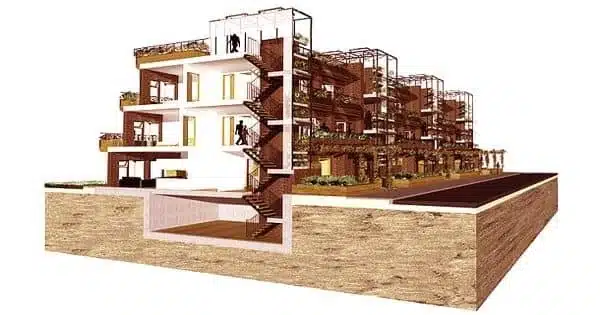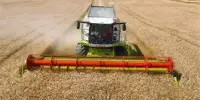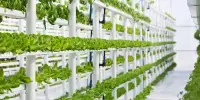Building-integrated agriculture (BIA) is the practice of situating high-performance hydroponic greenhouse farming systems on and within mixed-use buildings in order to capitalize on synergies between the built environment and agriculture. It is a sustainable farming approach that entails incorporating agricultural processes into building architecture and infrastructure. This method enables for crop production and animal husbandry within or on the exterior of urban or rural structures.
BIA can take many shapes and employ numerous technologies, but its basic purpose is to make better use of space and resources while encouraging local food production and sustainability. Recirculating hydroponics, waste heat captured from a building’s heating, ventilation, and air conditioning (HVAC), solar photovoltaics or other types of renewable energy, rainwater catchment systems, and evaporative cooling are all common features of BIA installations.
Around 600 BC, the Hanging Gardens of Babylon may have been the first example of BIA. Eli Zabar’s Vinegar Factory Greenhouse, Gotham Greens, Dongtan, Masdar City, and Lufa Farms are modern examples. Ted Caplow created the term “building-integrated agriculture” in a paper presented at the 2007 Passive and Low Energy Cooling Conference in Crete, Greece.
Here are some key aspects and components of building-integrated agriculture:
- Vertical Farming: Vertical farming systems, in which crops are farmed in stacked layers or vertically inclined surfaces within buildings, are frequently included in BIA. This method makes the best use of available space and can make use of hydroponic or aeroponic systems for effective water and fertilizer management.
- Green Roofs and Walls: Another feature of BIA is green roofs and walls. Planting flora on the roofs and walls of buildings can assist in reducing energy use, improving air quality, and creating chances for edible plant growth.
- Aquaponics and Hydroponics: Soilless growing methods such as aquaponics and hydroponics, which are well-suited for indoor or limited-space situations, are widely used in BIA. Aquaponics is the combination of fish farming and plant cultivation, whereas hydroponics is the cultivation of plants in nutrient-rich water solutions.
- Livestock Integration: In some cases, BIA may include the raising of small animals such as chickens or rabbits within buildings. These animals can contribute to the overall food production system by providing meat, eggs, or other animal products.
- Energy Efficiency: BIA designs often emphasize energy-efficient technologies, such as using natural light, LED grow lights, and renewable energy sources to reduce energy consumption and environmental impact.
Community benefits from building integrated agriculture include increased availability of fresh, locally grown produce, job opportunities in urban agriculture, and educational programs on sustainable farming practices.
BIA can help to achieve sustainability goals by reducing the environmental impact of food production, preserving water resources, and eliminating the need for long-distance food transportation. It also has the potential to improve food security by increasing the availability of fresh vegetables, particularly in highly populated metropolitan areas. The success of BIA projects, on the other hand, is dependent on elements such as local climate, available technology, and the commitment of building designers, developers, and urban planners to include agriculture in their projects.
















